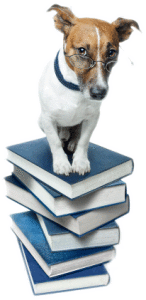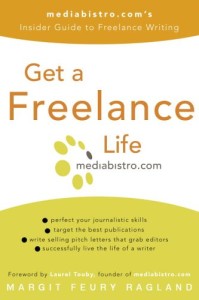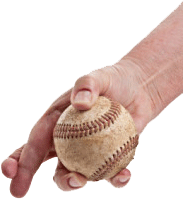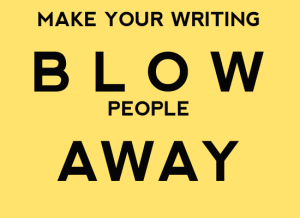 How would Abraham C. Cuyler, an 18th-century loyalist from Albany, describe Sarah Palin?
How would Abraham C. Cuyler, an 18th-century loyalist from Albany, describe Sarah Palin?
On Tuesday night I attended a writing seminar called “Eye of the Beholder: Crafting Character through Description.” The course synopsis advertised that participants would focus “on using description in a selective manner to develop characterization.” I took this class to improve on how I use detail and words to paint vivid images of the past.
Instructor Kim Freeman led her 6 course participants in a discussion of First- and Third-Person narration. We paid particular attention to the 3 different types of Third-Person narrators:
- Close: Tells a story in the Third Person, but with a First-Person perspective.
- Omniscient: The narrator stands outside of the story & they know everything that will happen. (Charles Dickens preferred Third-Person omniscient narrators.)
- Limited: The narrator does not know everything. They stick with one character for a while and then linger around another character. (Virginia Woolf often used Third-Person limited narrators.)
With a better understanding of narration, my 5 classmates and I spent 20 minutes writing about a character we like and a character we dislike. I chose to write about Abraham C. Cuyler as a character I like. A man of principle, Cuyler supported the British Crown during the Revolution and in the process lost his community, property, and political office (Mayor of Albany). As a historian, I try to stay objective about the people I study. It felt wrong to write negatively about one of my historical characters, so I chose Sarah Palin, a present-day figure who drives me crazy. (With hindsight I realize that I should have had the same cautious reaction about writing positively about one of my historical subjects.)
After our descriptive writing exercise, Kim had us set aside our work while she led us through a literary analysis of snippets from Henry James’ [amazon_link id="B0084AY3UG" target="_blank" container="" container_class="" ]The American[/amazon_link] (1877), Paul Fox’s [amazon_link id="039331894X" target="_blank" container="" container_class="" ]Desperate Characters[/amazon_link] (1970), Diane Ackerman’s [amazon_link id="0679735666" target="_blank" container="" container_class="" ]A Natural History of the Senses[/amazon_link] (1990), Jhumpa Lahiri’s [amazon_link id="039592720X" target="_blank" container="" container_class="" ]Interpreter of Maladies[/amazon_link] (1999), William Faulkner’s [amazon_link id="0393931382" target="_blank" container="" container_class="" ]As I Lay Dying[/amazon_link] (1930), Audre Lourde’s [amazon_link id="0895941228" target="_blank" container="" container_class="" ]Zami: A New Spelling of My Name[/amazon_link] (1982), and Patricia Hampl’s “The Dark Art of Description” in The Iowa Review (Spring 2008).
Our analysis revealed that narrators have character and that everyone (author, narrator, and characters) has a filter. We filter the world we see through the attributes that make us who we are. To reinforce this point, Kim asked us to have the character we like describe the character we dislike. Hence: How would Abraham C. Cuyler describe Sarah Palin?
If I had been an omniscient narrator, I would have known that Kim planned to have us do this exercise. As I did not, I struggled to find a way to make it work. Cuyler spoke English, Dutch, & French. He loved his King and country and he participated in the fur trade. Using this information, I tried to describe Palin.
Cuyler would have found Palin out of place, an outspoken woman. From Cuyler’s point of view she could not be trusted; Palin lived in Alaska where she might have made “bons amis” with the Imperial Court of Russia. Moreover, Cuyler would have disliked Palin’s talk of “liberty” and “freedom” from government intervention. In Cuyler’s eyes the British were the freest people in the world; the English Constitution, history, and their “most gracious sovereign” made sure of that. I also scrawled a line about how Palin’s Alaskan experiences made her rustic—Cuyler may have lived in the frontier, but he would have viewed himself as refined.
Kim’s technique of using characters to describe other characters helped me to select great descriptive words. The best descriptive words multi-task; I don't have to tell you what Cuyler wore because I used the word “refined.” As a descriptive word, "refined" evokes the image of well-dressed. My use of “bons amis" conveyed the knowledge that Cuyler spoke French. Along with “refined” my readers should infer that Cuyler possessed education.
I love details and I will admit that I use a lot of them in my writing. However, “Character through Description” taught me that I can reveal many details just by choosing the right descriptive words. Writing about characters from another character’s perspective, or about scenes from the perspective of a character, helps place authors in the mindset they need to discover the right descriptive words.
Even historians can take advantage of this technique. We read letters and journals; we know what newspapers and books the people we study read. We often know about our subjects' occupations and education. Historians learn the details that shape character. We may not know exactly how a person would have described another person or interpreted a scene, but we can extrapolate and infuse what we do know to get into a subject's mindset. This will help us create a representational example of how they might have interpreted the people and places around them and in the process we will use approximately the same descriptive words they would have used.
What Do You Think?
Details make great stories, but details can be more than just facts. Words create detail.
Have you ever tried a similar technique to improve your writing? Did it work? Please share by leaving a comment.
*Photo of Sarah Palin courtesy of Therealbs2002









